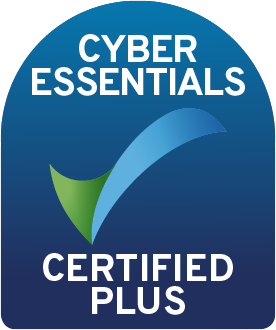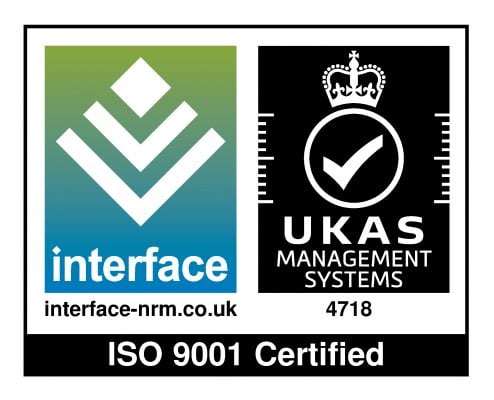Employee training is a vital L&D practice that yields many benefits. From increased productivity, and enhanced employee performance and satisfaction to improved company culture and reduced staff turnover, the advantages of employee training are clear. To achieve the best results and to help employees excel, employers need to prioritise job-related training courses that address the individual training requirements of each role.
Using e-learning technology, training professionals can move away from generic training courses and deliver personalised, job-related training courses that ensure the individual L&D needs of employees are met. This can be implemented with the help of personalisation tools in an e-learning platform such as an LMS – keep reading to find out more.
What is personalised learning with an e-learning platform?
77% of L&D professionals think personalised learning is vital to employee engagement, so finding the right tools and technology to support this should be a top priority when delivering job-related training courses. Using a learning management system (LMS) or learning experience platform (LXP), L&D teams can individualise the learning experience for each learner by tailoring it to their needs and preferences, giving learners more control over how they navigate their own training process. Let’s explore some examples of how to achieve this.
Examples of how to deliver job-related training courses with e-learning personalisation
User-generated content for soft skills training
Plenty of job-related training courses will place a heavy focus on soft skills development. Unlike hard skills training courses or technical skills training, soft skills are typically picked up through life experiences or developed via interpersonal work relationships. However, soft skills can also be incorporated into job-related training courses, meaning that employees are receiving a well-rounded and thorough training experience that covers all necessary skills.
A highly effective way to deliver soft skills training specific to each job role is to use an LXP. With an LXP, experienced employees can create their own e-learning content that is designed to help employees develop soft skills that they will need to effectively perform in their roles. For example, an experienced customer service employee can create content that shares key information on how to deal with a customer by using active listening and nonverbal communication. Asking employees to generate their own content can help deliver a personalised and relevant learning experience that helps employees develop skills that are proven to be essential in their specific roles.
What are soft skills and how to develop them with e-learning - find out here.

Personalised learning pathways for large companies
For large organisations with employees spread across multiple departments and sectors, delivering relevant and impactful job-related training courses that are specific to their learning requirements can be a complex manual task. However, an LMS enables L&D teams to create personalised learning pathways to assign learning based on criteria such as job role, department, or proficiency levels.
Personalised learning pathways allow employers to deliver a highly tailored learning experience that ensures an employee is progressing through all the essential training materials, developing core skills and competencies as a result. Employees can add a layer of personalisation by incorporating their own goals and objectives into the learning pathway. Using an LMS, these goals can be generated to create clear markers for progression with features such as percentage wheels that are designed to motivate employees and ensure they stay on track with their training.
Find out how a personalised learning experience achieves better results.
Create personalised recommendations using generative AI
To create a personalised learning pathway in an LMS, L&D teams will have typically already input all relevant criteria into the system, along with creating and implementing any relevant training materials. However, if L&D teams aren’t yet sure which training materials and content types would best support an individual employee based on their job role and experience, they can use generative AI.
AI algorithms can analyse an employee's job role, knowledge base, experience, and skill set, and use this data to determine what training content an individual learner would benefit from. Additionally, if L&D teams are looking to create job-related training courses that are tailored to the L&D requirements of a specific role, they can use generative AI to map out the skills and competencies required for thorough and role-specific training.
How useful is generative AI for e-learning course development? Find out by watching our webinar.
Job-related training space within a tenant site
As it’s common for companies to have many employees with the same or similar job titles, training materials will need to be accessed by multiple staff members at any given time. To ensure that the right employees are accessing the relevant role-specific training materials, L&D teams can use a multi-tenant LMS to create tenant sites for dedicated departments or job titles.
A multi-tenant LMS allows administrators to create and manage multiple independent learning environments within a single solution; these environments are known as tenants. Each tenant can be accessed by a group of selected users, such as a large sales team with the same training requirements.
Using a tenant site to deliver job-related training courses ensures that employees receive a tailored learning experience, only accessing content that is relevant to their role, department, or wider organisation. This delivery format makes it easier for employers to distribute new information and assign learning as training materials can easily be shared within a select group of people.
Find out everything you need to know about personalised learning with a multi-tenant LMS here.

Tailored training content
When designing and distributing job-related training courses, it’s important to understand that some content types are more suited to a specific role than others. To give employees the best training opportunities and to achieve optimum results, L&D teams can change content formats and delivery based on job roles. For example, a role that requires physical work such as warehouse operative may benefit from practical training carried out in a face-to-face setting or through a virtual simulation using situation training courses delivered via an LMS.
L&D teams need to assess which type of training content would best suit each role within the organisation and create the relevant courses and lessons based on this information. This can be done in-house using an LMS or, if content requires complex interactivity such as simulation training, acquired from a third party.
Watch our webinar to find out how to transform your training with custom e-learning course development.
Deliver a personalised learning experience with a feature-rich LMS
To achieve a truly personalised learning experience, L&D teams need to be well-equipped with the right tools and technology. Our feature-rich e-learning platforms offer everything you need to tailor the learning experience to each user, increasing learning outcomes and improving L&D ROI as a result. Explore our Totara and Moodle platform offerings here or get in touch with one of our e-learning experts to find out more.

Contact Hubken today
Quick responses and clear advice, we're here whenever you need us. Our friendly e-learning specialists are ready to help and will be in touch shortly after you've sent your message.
.png?width=1080&height=150&name=Slim%20blog%20CTAs%20(23).png)
.png?width=1080&height=150&name=Slim%20blog%20CTAs%20(26).png)



